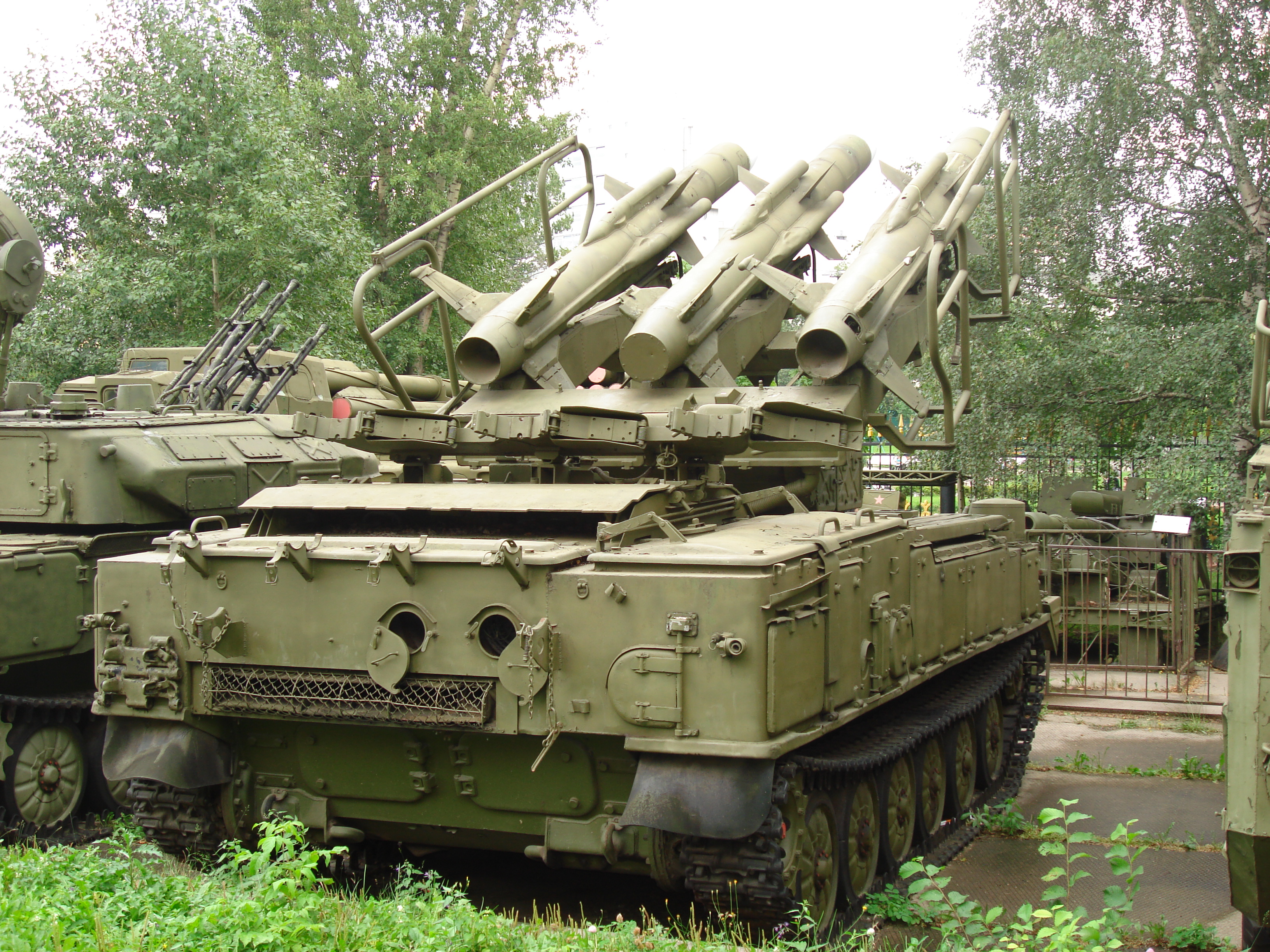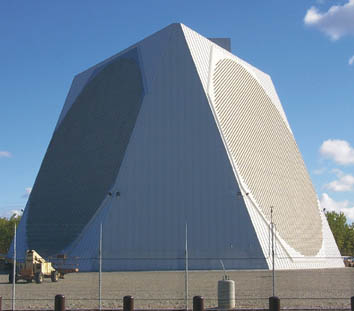|
SA-4 Ganef
The 2K11 ''Krug'' (russian: 2К11 «Круг»; en, circle) is a Soviet and now Russian medium-range, medium-to-high altitude surface-to-air missile (SAM) system. The system was designed by NPO Novator and produced by Kalinin Machine Building Plant. Its GRAU designation is "2K11." Its NATO reporting name is SA-4 '' Ganef'', after the Yiddish word meaning "thief"; the name was used because the system was a copy of the Bristol Bloodhound. Development and service Development of the Krug ZRK-SD (2K11) air defense system started in 1957 by the Lyulev OKB design bureau. It was first displayed during a parade in Moscow in May 1965. The system started to be fielded in 1967 and became fully operational in 1969. It was used by the Soviet Army as a long-range SAM. The early version of the Krug entered service in 1965. The first operational deployment version, the Krug-A, entered service in 1967, with extensively modified versions, the Krug-M in 1971 and the Krug-M1 in 1974, which were ... [...More Info...] [...Related Items...] OR: [Wikipedia] [Google] [Baidu] |
NATO Reporting Name
NATO reporting names are code names for military equipment from Russia, China, and historically, the Eastern Bloc (Soviet Union and other nations of the Warsaw Pact). They provide unambiguous and easily understood English words in a uniform manner in place of the original designations, which either may have been unknown to the Western world at the time or easily confused codes. For example, the Russian bomber jet Tupolev Tu-160 is simply called "Blackjack". NATO maintains lists of the names. The assignment of the names for the Russian and Chinese aircraft was once managed by the five-nation Air Standardization Coordinating Committee (ASCC), but that is no longer the case. American variations The United States Department of Defense (DOD) expands on the NATO reporting names in some cases. NATO refers to surface-to-air missile systems mounted on ships or submarines with the same names as the corresponding land-based systems, but the US DoD assigns a different series of numbers wi ... [...More Info...] [...Related Items...] OR: [Wikipedia] [Google] [Baidu] |
Ramjet
A ramjet, or athodyd (aero thermodynamic duct), is a form of airbreathing jet engine that uses the forward motion of the engine to produce thrust. Since it produces no thrust when stationary (no ram air) ramjet-powered vehicles require an assisted take-off like a rocket assist to accelerate it to a speed where it begins to produce thrust. Ramjets work most efficiently at supersonic speeds around and can operate up to speeds of . Ramjets can be particularly useful in applications requiring a small and simple mechanism for high-speed use, such as missiles. The US, Canada, and UK had widespread ramjet powered missile defenses during the 1960s onward, such as the CIM-10 Bomarc and Bloodhound. Weapon designers are looking to use ramjet technology in artillery shells to give added range; a 120 mm mortar shell, if assisted by a ramjet, is thought to be able to attain a range of . They have also been used successfully, though not efficiently, as tip jets on the ends of helicop ... [...More Info...] [...Related Items...] OR: [Wikipedia] [Google] [Baidu] |
Vinnitsa
Vinnytsia ( ; uk, Вінниця, ; yi, װיניצע) is a city in west-central Ukraine, located on the banks of the Southern Bug. It is the administrative center of Vinnytsia Oblast and the largest city in the historic region of Podillia. Administratively, it is incorporated as a town of oblast significance. It also serves as an administrative center of Vinnytsia Raion, one of the 6 districts of Vinnytsia Oblast, though it is not a part of the district. It has a population of . The city's roots date back to the Middle Ages. It was under Lithuanian and Polish control for centuries until the Russian Empire annexed it in 1793. During the 1930s and early 1940s the city was the site of massacres, first during Stalin's purges and then during the Holocaust in Ukraine and the Nazi occupation. A Cold War–era airbase was located near the city. Name The name of Vinnytsia appeared for the first time in 1363. It is assumed that the name is derived from the old Slavic word "Vin ... [...More Info...] [...Related Items...] OR: [Wikipedia] [Google] [Baidu] |
Ural Automotive Plant
The Urals Automotive Plant, an Open Stock Company, ( Russian: ''Ура́льский автомоби́льный заво́д, УралАЗ''; translit. Uralskiy Avtomobilnyi Zavod, UralAZ) is a major Russian manufacturer of off-road trucks under the Ural (Cyrillic: "Урал") brand. Located in the city of Miass, Chelyabinsk Oblast in the Ural Mountains. The plant was established in 1941; when the ZiS truck plant was evacuated from Moscow during World War II. History Early history In the autumn of 1941, Soviet leaders decided to build a plant for the manufacturing of military trucks, and it was named Ural Automotive Plant. Since April 1942, the factory has produced primarily engines and gearboxes. On July 8, 1944 the first truck ZIS-5V was built under the brand UralZIS. The new factory became the Ural branch of ZIS UralZIS. At the End of World War II in Europe, the ZIS-5 was considered simple and robust, and thus remained in production for many years. It was not until ... [...More Info...] [...Related Items...] OR: [Wikipedia] [Google] [Baidu] |
AT-T
Artilleriyskiy Tyagach Tyazholiy, or AT-T (russian: Артиллерийский Тягач, Тяжёлый (АТ-Т), meaning "heavy artillery tractor") was a Soviet Cold War-era artillery tractor An artillery tractor, also referred to as a gun tractor, is a specialized heavy-duty form of tractor unit used to tow artillery pieces of varying weights and calibres. It may be wheeled, tracked, or half-tracked. Traction There are two .... The AT-T is based on the chassis and drive system from the T-54 tank. However, the hull has been rotated 180 degrees, with the engine, clutch, gearbox, steering gear and the drive wheels located at the front of the vehicle. The crew cabin is also located in the front part of the vehicle, and is from the ZIS-150 and ZIL-164 trucks. Variants *BAT-M obstacle removing vehicle *BTM-3 high-speed trench digging vehicle * Kharkovchanka Antarctic off-road vehicle * MDK-2M pits digging vehicle * P-40 radar External links O. Protasov - AT-T he ... [...More Info...] [...Related Items...] OR: [Wikipedia] [Google] [Baidu] |
Continuous-wave Radar
Continuous-wave radar (CW radar) is a type of radar system where a known stable frequency continuous wave radio energy is transmitted and then received from any reflecting objects. Individual objects can be detected using the Doppler effect, which causes the received signal to have a different frequency from the transmitted signal, allowing it to be detected by filtering out the transmitted frequency. Doppler-analysis of radar returns can allow the filtering out of slow or non-moving objects, thus offering immunity to interference from large stationary objects and slow-moving clutter. This makes it particularly useful for looking for objects against a background reflector, for instance, allowing a high-flying aircraft to look for aircraft flying at low altitude against the background of the surface. Because the very strong reflection off the surface can be filtered out, the much smaller reflection from a target can still be seen. CW radar systems are used at both ends of the range ... [...More Info...] [...Related Items...] OR: [Wikipedia] [Google] [Baidu] |
H Band (NATO)
The NATO H band is the obsolete designation given to the radio frequencies from 6 000 to 8 000 MHz (equivalent to wavelengths between 5 and 3.75 cm) during the cold war period. Since 1992 frequency allocations, allotment and assignments are in line to NATO Joint Civil/Military Frequency Agreement (NJFA). However, in order to identify military radio spectrum requirements, e.g. for crises management planning, training, Electronic warfare Electronic warfare (EW) is any action involving the use of the electromagnetic spectrum (EM spectrum) or directed energy to control the spectrum, attack an enemy, or impede enemy assaults. The purpose of electronic warfare is to deny the opponen ... activities, or in military operations, this system is still in use. References Radio spectrum Microwave bands {{Wireless-stub ... [...More Info...] [...Related Items...] OR: [Wikipedia] [Google] [Baidu] |
9K33 Osa
The 9K33 ''Osa'' (, literally "wasp"; NATO reporting name SA-8 ''Gecko'') is a highly mobile, low-altitude, short-range tactical surface-to-air missile system developed in the Soviet Union in the 1960s and fielded in 1972. Its export version name is Romb. Development Design work on an entirely new, self-propelled air defense guided missile system began in 1960 and was assigned to the Moscow-based () research and design institute under lead designer M.M. Kosichkin. The program initially suffered numerous delays and setbacks due to poorly formulated performance and tactical requirements, as this was a pioneering battlefield air defense system with no equivalents in existence at the time, and no doctrinal experience with such a weapon. P.M. Chukadov was assigned project leader in 1965 after a thorough review of the stalled program. The Osa had service acceptance in 1972 after a period of trials. Description The Osa was the first mobile air defense missile system incorporating it ... [...More Info...] [...Related Items...] OR: [Wikipedia] [Google] [Baidu] |
2K12 Kub
The 2K12 ''"Kub"'' (russian: 2К12 "Куб"; en, cube) (NATO reporting name: SA-6 "Gainful") mobile surface-to-air missile system is a Soviet low to medium-level air defence system designed to protect ground forces from air attack. "2К12" is the GRAU designation of the system. Each 2K12 battery consists of a number of similar tracked vehicles, one of which carries the 1S91 (SURN vehicle, NATO designation "Straight Flush") 25 kW G/ H band radar (with a range of ) equipped with a continuous wave illuminator, in addition to an optical sight. The battery usually also includes four triple-missile transporter erector launchers (TELs), and four trucks, each carrying three spare missiles and a crane. The TEL is based on a GM-578 chassis, while the 1S91 radar vehicle is based on a GM-568 chassis, all developed and produced by MMZ. Development The development of the 2K12 was started after 18 July 1958 at the request of the CPSU Central Committee. The system was set the require ... [...More Info...] [...Related Items...] OR: [Wikipedia] [Google] [Baidu] |
Early Warning Radar
An early-warning radar is any radar system used primarily for the long-range detection of its targets, i.e., allowing defences to be alerted as ''early'' as possible before the intruder reaches its target, giving the air defences the maximum time in which to operate. This contrasts with systems used primarily for tracking or gun laying, which tend to offer shorter ranges but offer much higher accuracy. EW radars tend to share a number of design features that improve their performance in the role. For instance, EW radar typically operates at lower frequencies, and thus longer wavelengths, than other types. This greatly reduces their interaction with rain and snow in the air, and therefore improves their performance in the long-range role where their coverage area will often include precipitation. This also has the side-effect of lowering their optical resolution, but this is not important in this role. Likewise, EW radars often use much lower pulse repetition frequency to maxi ... [...More Info...] [...Related Items...] OR: [Wikipedia] [Google] [Baidu] |
E Band (NATO)
The NATO E band is a designation given to the radio frequencies from 2000 to 3 000 MHz (equivalent to wavelengths between 15 and 10 cm) during the cold war period. Since 1992 detailed frequency allocations, allotment and assignments are in line to NATO Joint Civil/Military Frequency Agreement (NJFA). However, in order to generically identify military radio spectrum requirements, e.g. for crises management planning, training, Electronic warfare Electronic warfare (EW) is any action involving the use of the electromagnetic spectrum (EM spectrum) or directed energy to control the spectrum, attack an enemy, or impede enemy assaults. The purpose of electronic warfare is to deny the opponen ... activities, radar or in military operations, the Nato band system is often used. References {{EMSpectrum Radio spectrum Military equipment of NATO ... [...More Info...] [...Related Items...] OR: [Wikipedia] [Google] [Baidu] |




